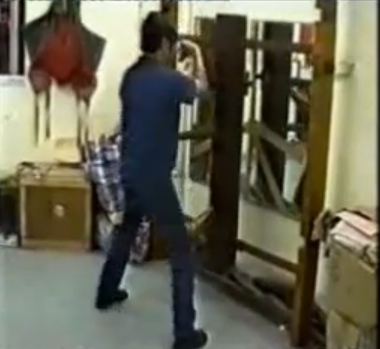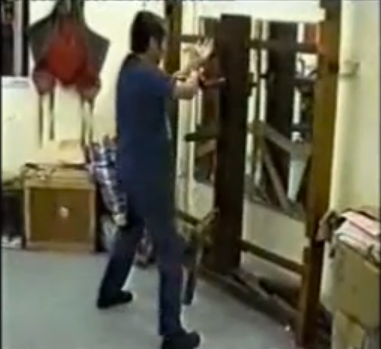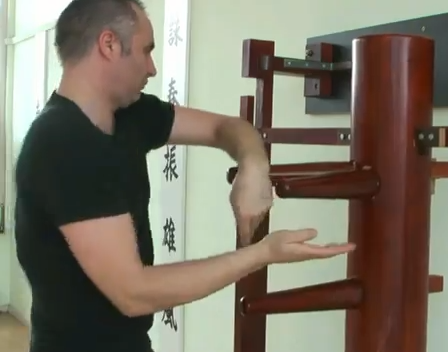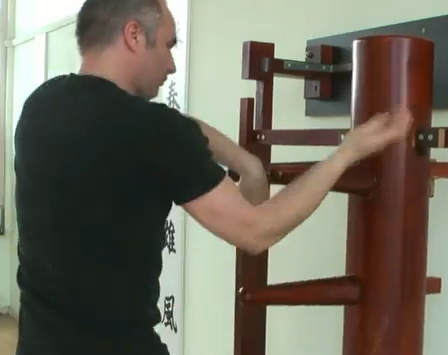
Originally Posted by
Paddington

LFG, ever come across the technique called kau sau? I am not saying that is what is presented in those photos but, from my knowledge, it does appear to be a kau sau. When closing the wooden dummy sections kau sau is often used; an arm has a jum sau contact (in the tan sau like shape) with one side of the dummy arm and then kau saus around to the other side of the dummy arm.
Although on the dummy both the jum and kau sau occur on the same dummy arm, one reality (what you need to imagine) is that the opponent has thrown another strike with his other arm; the first arm being blocked/deflected/controlled by your jum sau. So, here you switch to the other opposite outside gate from the jum sau via the kau sau. A turn or step with the technique goes without saying.
Anyway, that is just one application from the lineage I study under. Yes, for a kau sau the elbow does come up. You are right, I would not hunch either and would try not to engage my traps when raising my elbow.
EDIT: Oh, funnily enough like someones suggestion for a wu sau that encourages an attack via a certain gate, the jum sau I describe can be, in application, very shallow in order to encourage the opponent to attack along a particular line to set up kau sau.




 Reply With Quote
Reply With Quote






